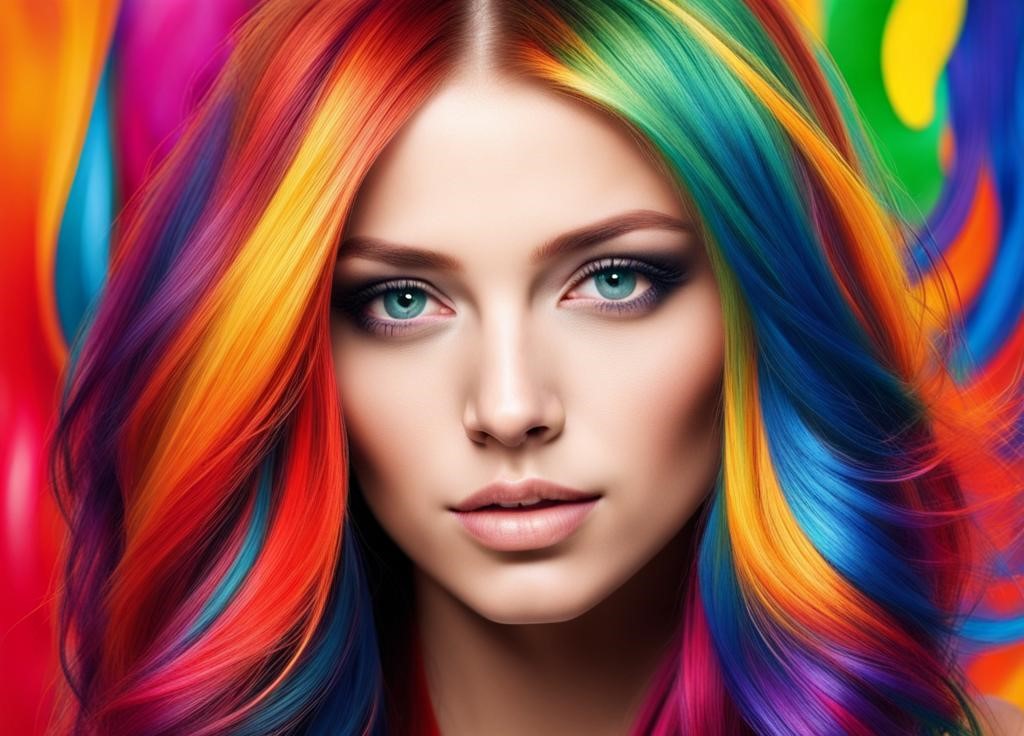Color-Treated Hair Care
Coloring your hair can transform your look and boost your confidence. Whether you’re going for a subtle change or a bold new shade, it’s important to care for your color-treated hair to maintain its vibrancy and health. One essential aspect of this care is choosing the right shampoo and mastering the art of shampooing. In this comprehensive guide, we’ll explore the science, techniques, and best practices for shampooing color-treated hair to help you keep those hues looking stunning.
Understanding the Unique Needs of Color-Treated Hair
Color-treated hair requires special attention due to the chemical processes involved in coloring. These processes often open the hair cuticle to allow the color to penetrate, making the hair more porous and susceptible to damage. Therefore, color-treated hair has unique needs that must be addressed for optimal maintenance.
Why Shampooing Matters for Color-Treated Hair
Shampooing is a fundamental aspect of hair care for everyone, but it takes on added significance for those with color-treated hair. Here’s why:
Cleansing: Shampooing helps remove dirt, excess oil, and product build-up, ensuring a clean canvas for your hair.
Preserving Color: The right shampoo can help protect your color investment, preventing premature fading.
Scalp Health: A healthy scalp is essential for vibrant hair. Shampooing keeps the scalp clean and free from issues that can impact hair health.
The Science Behind Color-Treated Hair and Shampooing
To truly master the art of shampooing color-treated hair, it’s important to understand the science behind it. Here are some key scientific insights:
| Insight | Explanation |
| pH Balance | Color-treated hair tends to have a slightly higher pH, making it more alkaline. Using a pH-balanced shampoo can help maintain the hair’s acidity, preserving the color. |
| Sulfates and Dyes | Shampoos containing sulfates can strip away color. Look for sulfate-free shampoos to prevent color fading. |
| Ingredients for Shine | Shampoos with ingredients like amino acids, proteins, and oils can enhance the shine and health of color-treated hair. |
| Color-Protecting Tech | Some shampoos contain technology that forms a protective layer around the hair shaft, shielding the color from environmental damage. |
Choosing the Right Shampoo for Color-Treated Hair
Selecting the right shampoo is a crucial step in color-treated hair care. Consider the following factors:
Sulfate-Free: Opt for sulfate-free shampoos to prevent color fading.
pH-Balanced: Look for shampoos with a pH balance close to that of your hair (around 4.5-5.5).
Color-Protecting: Shampoos specifically designed for color-treated hair often include color-protecting technology.
Ingredients: Consider shampoos with ingredients like keratin, argan oil, or collagen for added protection and shine.
The Art of Shampooing Color-Treated Hair
Now, let’s delve into the techniques and best practices for shampooing color-treated hair to ensure your color remains vibrant and your hair stays healthy:
Use Lukewarm Water: Begin with lukewarm water to open the hair cuticle slightly, allowing for effective cleansing.
Pre-Shampoo Treatment: Consider applying a pre-shampoo treatment or conditioner to the ends of your hair to protect them from excessive drying.
Less Is More: Use a small amount of shampoo. You can always add more if needed.
Gentle Massage: Massage your scalp and roots gently with your fingertips. Avoid using your nails, as they can damage the scalp.
Don’t Scrub Ends: Avoid scrubbing the ends of your hair, as they are more delicate and prone to damage.
Rinse Thoroughly: Make sure to rinse your hair thoroughly to remove all shampoo residue.
Condition with Care: Use a conditioner designed for color-treated hair, applying it mainly to the ends.
Final Rinse: Finish with a final rinse of cool water to help close the cuticle and lock in moisture.
Maintaining Color Vibrancy
Preserving the vibrancy of color-treated hair isn’t just about choosing the right shampoo and shampooing techniques; it also involves a few additional strategies:
Use a Color-Protecting Conditioner: Pair your color-protecting shampoo with a conditioner designed for color-treated hair. This will provide extra moisture and protection.
Limit Washing: Overwashing can lead to color fading. Try to space out your washes, and use dry shampoo between washes if needed.
UV Protection: Sunlight can be harsh on colored hair. Use UV-protecting hair products or wear a hat to shield your hair from the sun’s rays.
Cool Showers: Hot water can open the hair cuticle, which may cause color loss. Wash your hair with lukewarm or cool water.
Avoid Chlorine: If you swim regularly, consider using a swim cap or special hair products to protect your color from chlorine damage.
Regular Trims: Keeping your ends healthy through regular trims can help maintain the overall look of your color-treated hair.
Debunking Common Myths
There are several myths surrounding color-treated hair and shampooing. Let’s debunk a couple of them:
| Myth | Reality |
| You Should Shampoo Less | While overwashing can strip color, it’s important to maintain scalp health. Use a color-protecting shampoo designed for regular use. |
| Color-Protecting Shampoos are Ineffective | Quality color-protecting shampoos are effective in preserving color and preventing fading when used correctly. |
Shampooing in Your Hair Care Routine
Effective shampooing is just one component of a comprehensive hair care routine for color-treated hair. To maintain your hair’s health and vibrancy, consider the following tips:
Balanced Diet: A balanced diet rich in vitamins and minerals is essential for the overall health of your hair.
Regular Conditioning: Use a color-protecting conditioner regularly to keep your hair hydrated and strong.
Limited Heat Styling: Minimize the use of heat styling tools to prevent additional damage to color-treated hair.
Professional Maintenance: Schedule regular appointments with a professional colorist to touch up your color and receive expert guidance.
Conclusion
Mastering the art of shampooing for color-treated hair involves selecting the right shampoo, understanding the science, and employing effective techniques. With the right approach to hair care, you can enjoy long-lasting color vibrancy and healthy, beautiful hair.
